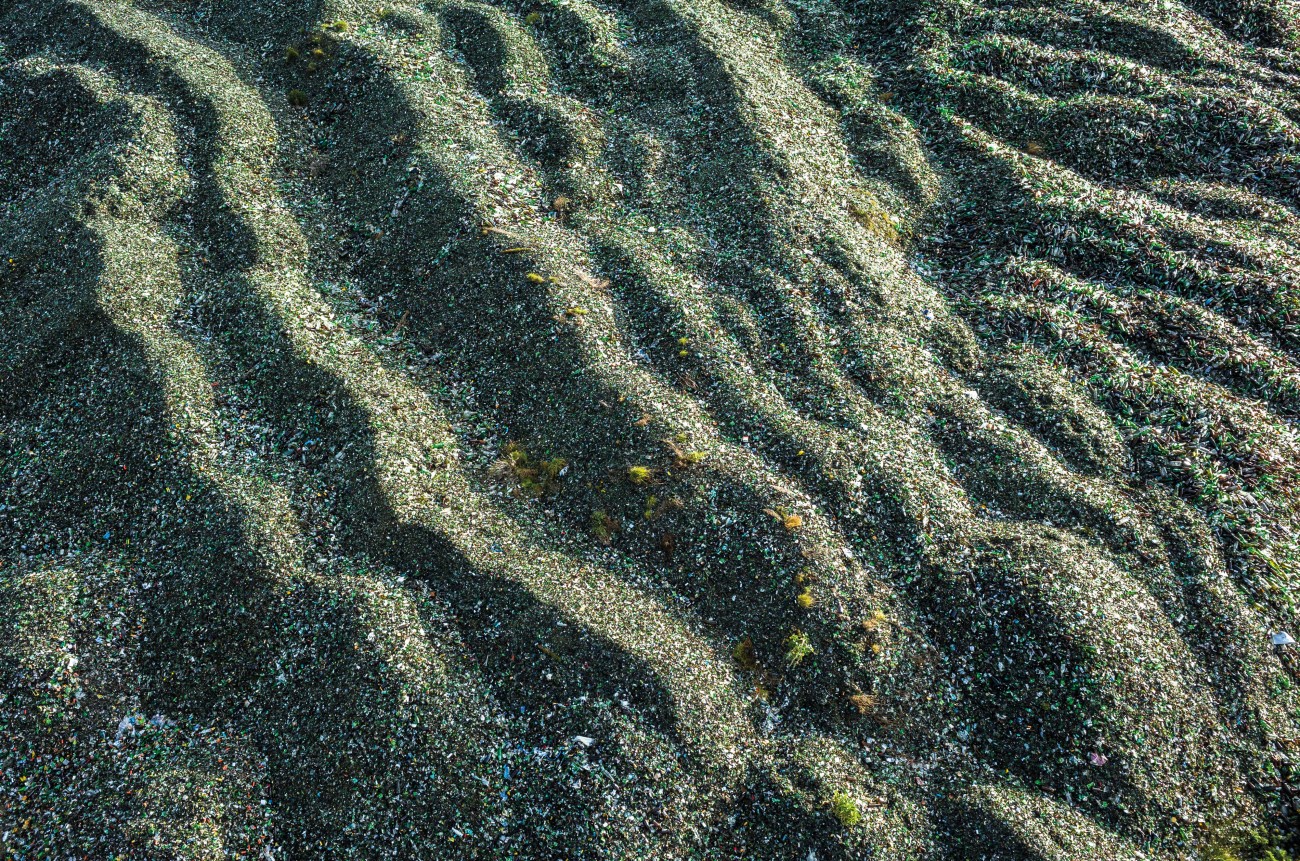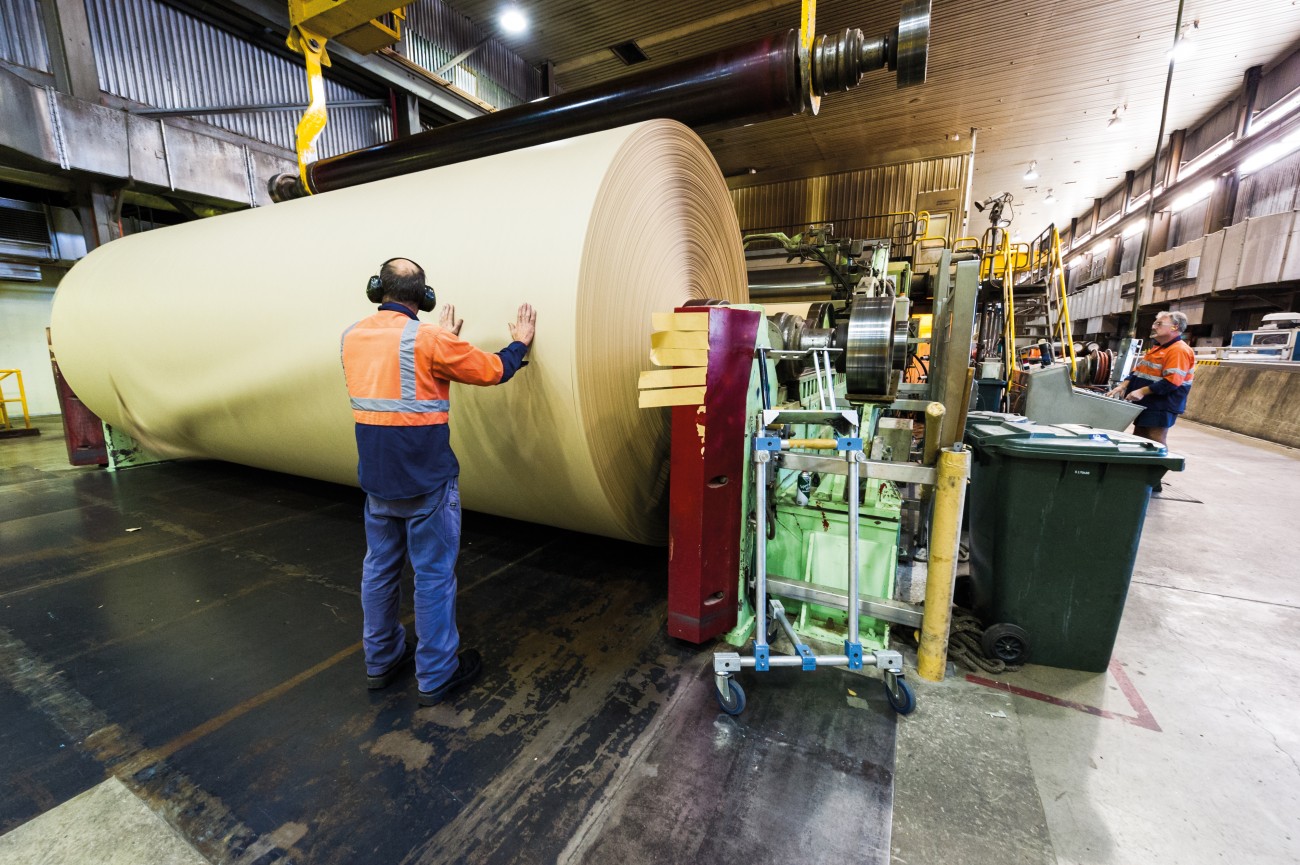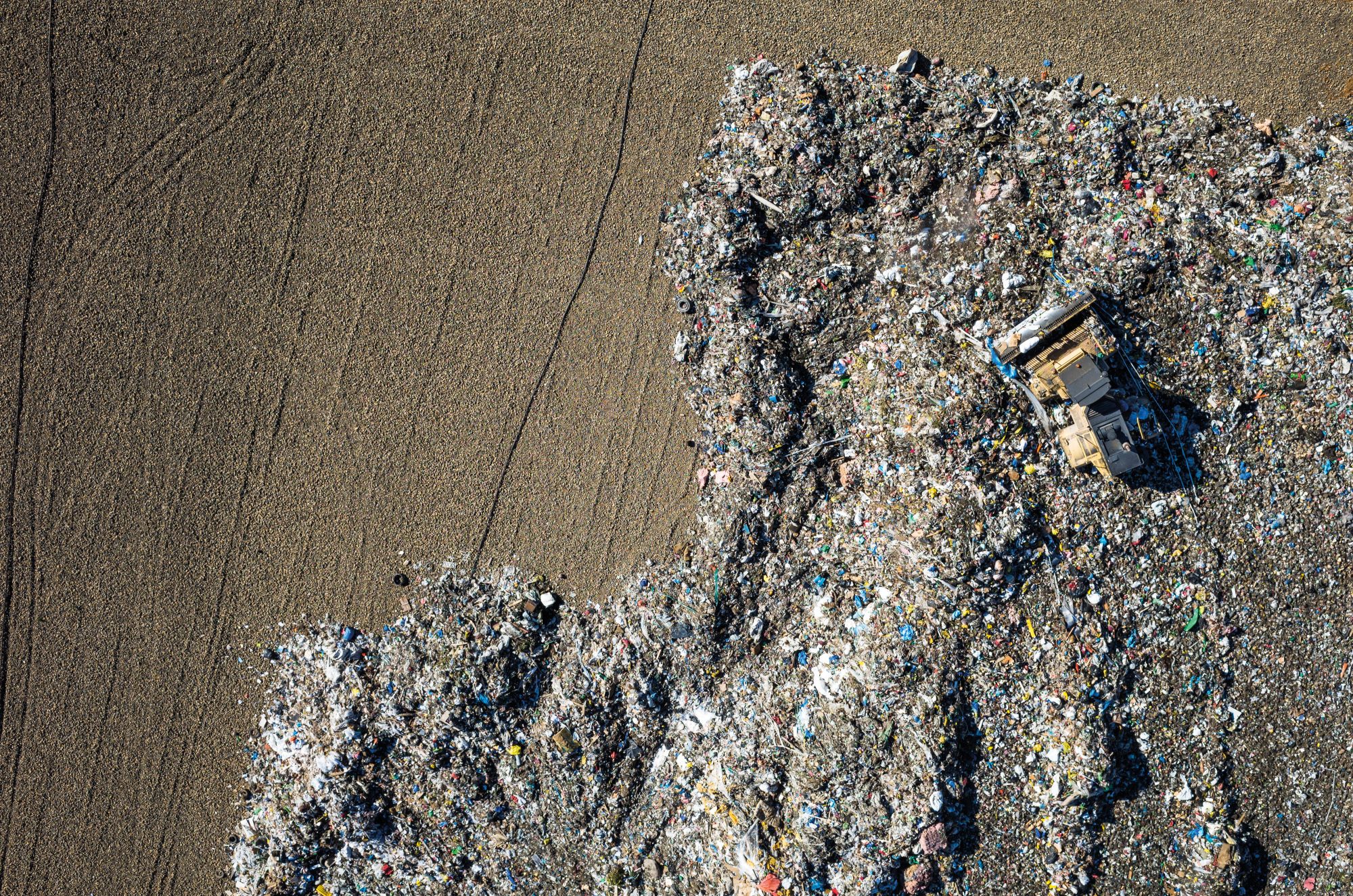
Waste not, want not
In our rush through modern life, we leave behind a mountain of rubbish that gets a little higher every year. The problem starts in our homes—so does the solution.

On a February morning in 2009, Waveney Warth put her rubbish bag aside. The bag weighed two kilograms, more or less, and it contained a whole year’s worth of household waste. She and her partner, Matthew Luxon, had set themselves the challenge of sending nothing to the landfill for 12 months. In the bag were the few things they hadn’t been able to put to another use, or compost, or recycle, or feed to the chooks. Some of it was other people’s plastic that had blown onto their property.
In some ways, the couple’s rubbish-free year was more about what they didn’t admit into their house in the first place than what went out, because they knew that before you can waste, you have to consume.
Instead, they choked their waste stream off at the source, exercising what Waveney calls their “consumer power”. They rejected anything that was “in itself junky, made of plastic or single-use”. If it didn’t come in a recyclable container, they didn’t buy it. At the supermarket, that put the dairy aisle, frozen foods, snack and bread sections pretty much off limits. They were amazed how their packaging veto meant they instead bought local, fair trade or ecologically friendly alternatives.
Eliminating 80 per cent of their waste was surprisingly easy. The remaining 20 per cent was a trial. They kept all their metal waste—even drawing pins—and took it to the scrap-metal dealer. Meat came from the butcher in paper. They baked their own bread, made their own snacks (“making hummus with a potato masher isn’t as much fun as it looks”). If something could be reused, that’s what they did. Their Auckland home is a shrine to “mid-century eclectic” design—“re-homed” solid wood pieces “that don’t compromise our planet’s ability to support life”. Bedding, crockery, cutlery, couches—most are going around again. In the end, it all came down to an almost slavish adherence to the four Rs: reduce, reuse, rehome, recycle…a clever mantra for an old idea.
Luxon’s grandmother raised a family on a Canterbury farm in the 1950s. Her grocer delivered just once a month, and he didn’t make much out of it. “Her list had about a dozen items on it,” Luxon recalls, “like flour, sugar and floor polish.” Everything else she made—shampoo, toothpaste, soap. Most New Zealanders today would blanch at that kind of austerity, because given a choice, say statistics, we’ll take convenience over stewardship any day of the week.
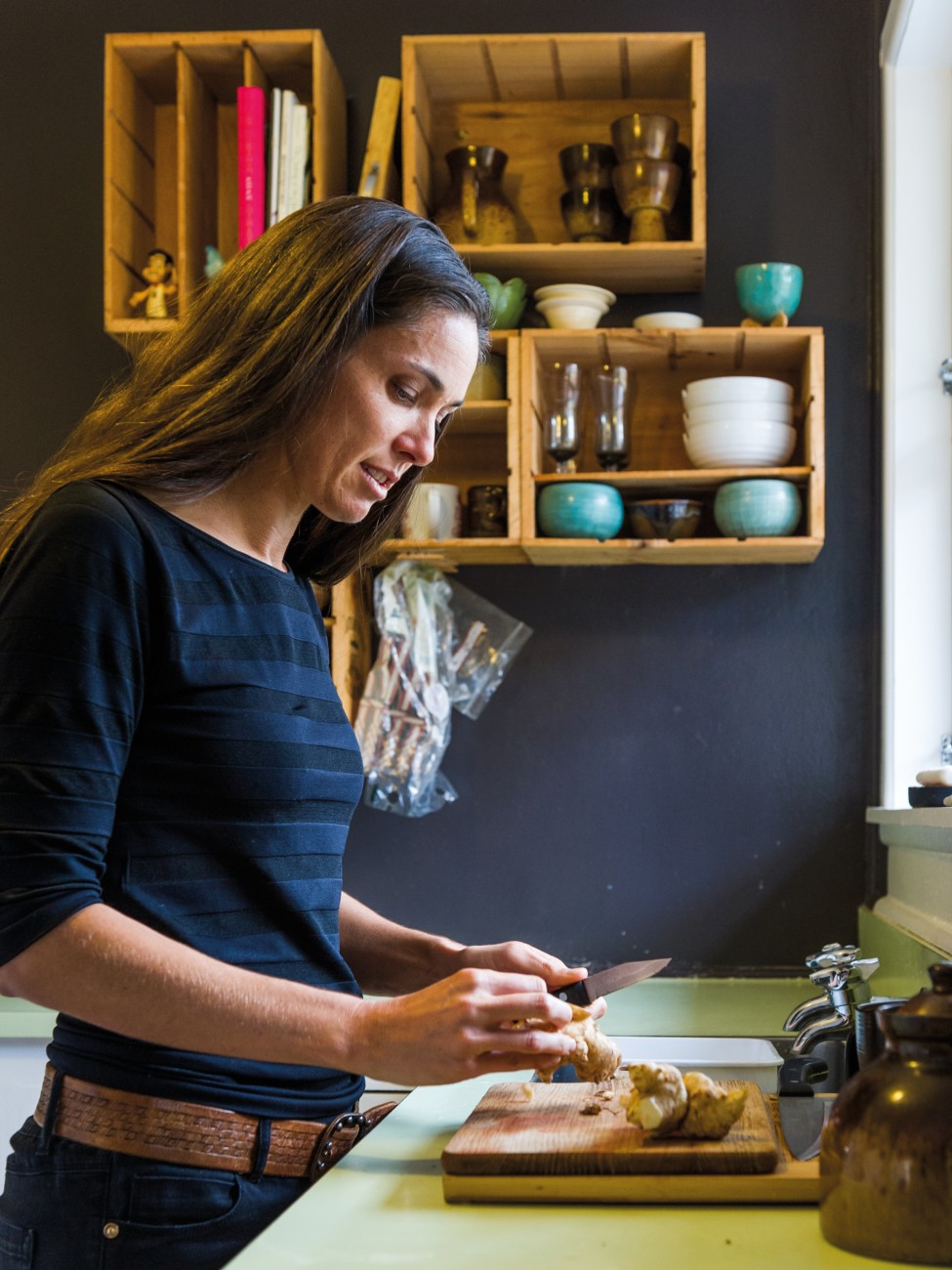
Warth and Luxon still have that two-kilogram bag of rubbish. They use it as a prop when they’re giving public talks about their zero-waste lifestyle.
Meanwhile, Warth’s neighbours lug brimming rubbish bags to the gate every week. And every year, New Zealanders send around 2.5 million tonnes of waste to the landfill—more than a tonne per household. Over the past quarter-century, the volume of stuff we throw away has skyrocketed by 73 per cent. Every month, we create a national rubbish pile that, if heaped on a rugby field, would tower 30 storeys high.
According to the Ministry for the Environment, the vast bulk of that pile never biodegrades. It’s with us for good. And roughly three-quarters of it shouldn’t be there at all—it could have been recovered, reused or recycled.
[Chapter break]
Message in a bottle
You can tell a lot about a society from what it throws away. Yuri Schokking and I are standing in a sea of green—Nelson Tasman’s glass recycling. “Nelson’s glass is about 55 per cent green, 30 per cent brown,” says Schokking, upper South Island area manager for Smart Environmental, the company that runs this recycling facility. It’s mostly wine bottles, but even the beer bottles are green here; European brands, mostly. Smart also looks after Buller’s recycling, carted here by road. “That’s about 30 per cent green, 55 per cent brown.” Monteith’s, DB, Speight’s. Glass volumes here spike after a test match and a long weekend and peak during summer holidays. They plummeted in 2008, when the recession hit.
You also learn something about human nature. “Some people think hypodermic syringes are recyclable,” says Schokking. But his “favourite” is plastic cream bottles in the middle of summer that nobody bothered to rinse out. Looking around, there are dozens of items here—old plastic laundry tubs, reeking meat trays, bits of broken appliances—that in a charitable moment you might put down to people’s confusion. But these are nothing:
Christchurch City Council staff have had to contend with dead dogs, live ammunition, sex toys, marijuana, a hand grenade, a goat…
Around eight per cent of recycling is contaminated, reports the council, most commonly by used nappies (sorters call them “baby bombs”), hosepipes and clothing. Every year, it sends out hundreds of warning letters to indiscriminate residents (if you’re wondering, cameras on the collection truck record the contents of each bin, which can later be matched to an address), and has even denied some of them collection after second warnings were ignored.
More broadly speaking, none of us are recycling with much diligence. In 2010, we recycled 161 kilograms of paper and packaging each—half of what we used. We did a little better with glass, consuming 251,664 tonnes, of which more than two-thirds went back for recycling.
Kerbside recycling schemes first started in Auckland and Lower Hutt in 1996 and grew slowly at first. In 2004, New Zealanders used 156,348 tonnes of plastic, and three-quarters of that is still out there somewhere, in landfills, in ditches, in the sea. But over the past decade, plastic recycling rates have doubled and now, recycling schemes are available to 97 per cent of the population. But are they doing any good?
Recycling is not a virtue, it’s a business. Only a small proportion of the South Island’s plastic gets recycled in New Zealand, because, says Schokking, “Cook Strait is the most expensive stretch of water in the world. It’s more cost-effective to put that material into the international market to achieve the best price.” So a giant baler compacts the plastics down into manageable cubes. “We fit about 22 cubic metres into a 70-tonne press, and it comes out the size of a hay bale.” The bales are then stacked in a 40-foot container and sent from Nelson to China more cheaply, says Schokking, “than we could road-freight it to Christchurch. Because we’ve got a good port here, and we get enough volume to create consignable loads.”
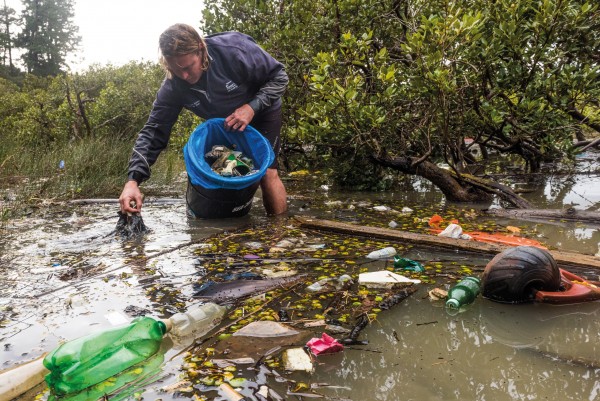
Most plastic material comes from food packaging. But that’s not where it returns. Recycled plastic rarely meets the quality standard of new, so regulations ban its reuse for food applications. “So that limits plastic’s secondary life to things like wheelie bins, road cones or clothing,” says Schokking. The only way recyclers can fill this vast and obvious market is to either sandwich it between two layers of new PET (polyethylene terephthalate) or break the polymer down into monomers, then repolymerise it into new PET.
If this sounds expensive, you’re right: it’s unlikely ever to happen in New Zealand. It’s all about critical mass, economies of scale. Our plastic goes to China (and a few other Asian reprocessors) because that country’s monumental waste volumes allow for much more economical reprocessing, and therefore, viable investment.
The economics of plastics recycling relies on two variables: the cost of making virgin plastic (which in turn depends upon the price of oil and natural gas) and the cost of recycling versus the cost of disposal. Right now, with oil prices at record lows, it’s cheaper to make new plastic.
In March, Britain’s biggest recycler of plastic milk bottles, Closed Loop, went to the wall because of a collapse in demand for recycled product. Two other United Kingdom companies had already closed their doors as prices for reprocessed plastic plummeted 40 per cent in nine months.
[Chapter Break]
An ethical dilemma
Recycling stops a lot of rubbish going to landfills, but it still uses energy and creates emissions, just as manufacturing does. The only way to reduce the environmental impact of packaging is not to buy it in the first place. Kill the demand. But if recycling gets more people thinking about where all our stuff comes from, and where it goes, that’s got to be good, right?
Wrong, say environment hard-liners such as the Worldwatch Institute, which claims that, by easing people’s conscience, recycling actually encourages high-consumption habits. Statistics appear to prove its point: recycling rates are on the rise, but consumption is at a flat gallop, nullifying the most critical element of the four Rs—‘reduce’. The message from advocates—that if we each do a little bit, we can save the planet—in fact sets up a disastrous fantasy that our individual responsibility to the environment has to happen only once a week and ends at the gate. It’s “a good start, but a terrible endpoint”, according to Worldwatch’s Alison Singer.
More provocative still is the institute’s assertion that putting out your recycling makes little difference to the fate of the planet. Against the magnitude of all the other looming catastrophes—climate change, mass extinctions, looming famine—recycling can do very little to stay the apocalypse. But perhaps the most unsettling contention is this: local and central government emphasis on recycling—and sideshows like taxes on bottled water and plastic shopping bags—places undue responsibility for waste on consumers, when it’s the producers who continue to deliver over-packaged, unrecyclable, short-lived or single-use goods without penalty who should be in the crosshairs.
In New Zealand, there is no legislated compunction on manufacturers to turn out their goods in recyclable packaging, nor even to keep that packaging to a minimum. Under the Waste Minimisation Act 2008, parties “may accept responsibility for the environmental effects of their products”. So far, around a dozen have done so, what the Ministry for the Environment calls a “mixed result”. An Environment Minister can theoretically force manufacturers of so-called “priority products”—mostly tyres, hazardous goods and e-waste—to develop a lifecycle stewardship scheme. As it happens, companies say they’d welcome that: they know they’d be at a commercial disadvantage if they volunteered and their competition didn’t.
The act also imposes a charge—$10 a tonne—on any waste going to landfill. Your council adds it to any tip fees you pay. Australian local governments say that’s too cheap—Western Australia imposes a waste levy of AU$28 a tonne; in Victoria, it’s AU$58.50 at metropolitan landfills. There’s only scant evidence from these examples that higher levies actually reduce the amount of waste going to landfill, but they do at least better reflect the full environmental impact of dumping our stuff.
[sidebar-1]
Well over half the waste dumped in New Zealand escapes a levy altogether. That’s because the charge doesn’t apply, yet, to commercial landfills (such as those run by demolition companies), cleanfills and farm dumps. That’s an estimated 6.5 million tonnes of unlevied waste a year—$65 million that could have gone into waste minimisation and product stewardship programmes.
But the biggest problem is that the market decrees what gets thrown out and what goes around for another go. When disposal is undervalued, that’s a price signal—if it’s cheaper to throw something away than recycle it, that’s what people will do.
David Stephenson grapples with these issues every weekday. As a utilities asset engineer at Tasman District Council, he has to find a path between what the Waste Minimisation Act requires the council to do and what ratepayers will put up with. He must encourage recycling while finding the money to underwrite the services and facilities. He must get people accustomed to meeting the full costs of disposal, “but the challenge that goes with that is that people say, ‘Well, I don’t like that price, so I’m going to find an alternative’.” All too often, that alternative is fly tipping—driving down some remote rural road and chucking your rubbish into the scrub or a farmer’s paddock.
As tip fees and kerbside rubbish collection charges have risen, so has fly tipping. Last summer, Whangarei District Council saw a 29 per cent jump in cases. Much of what gets illegally dumped is in fact booty from other illicit acts: rural waste managers report finding bags of offal and animal hides—the grisly leftovers of farm poaching. Some of it is drug paraphernalia. But the rest is simply stuff that could have gone into the waste stream, much of it recyclable. The costs of cleanup are borne by law-abiding ratepayers. Auckland Council, for instance, spends around $900,000 a year cleaning up after fly tippers.
“It certainly hits people in the back pocket nowadays when they take rubbish to the dump,” says Stephenson, “so it’s about getting that balance right, between accounting for the true cost of legitimate waste disposal and the illegal alternatives.”
[Chapter break]
The price of convenience
On March 27, 1962, Swedish engineer Sten Gustaf Thulin secured a US patent for “a continuous tube-like packaging material which is constructed and adapted to be divided into individual bags at the point of packaging”. Today, New Zealanders use a billion of his invention—the single-use plastic shopping bag—every year. A few councils accept them in recycling collections, as do some supermarkets. Most go to China, but one Auckland facility, Enviroreel, recycles them into cable reels and conduit.
Americans use 100 billion bags a year. Laid end-to-end, they would circle the equator 1330 times, the Earth Policy Institute claims. In fact, they literally do: a 2014 study estimated that more than five trillion pieces of plastic, weighing nearly 269,000 tonnes, are now floating in the world’s oceans, from the surface to three kilometres deep. Shopping bags and other one-time packaging makes up much of that waste: surveys by the charity Sustainable Coastlines have found that disposable plastic accounts for 72 per cent of rubbish on New Zealand beaches.
Why can’t every council recycle them? It’s all about volume, explains Schokking. His Nelson plant boasts a vast new warehouse-sized building, maybe 700 square metres of floor space, ready to take a new semi-automated sorting line. It still wouldn’t be anywhere near big enough to store the hundreds of thousands—probably millions—of plastic shopping bags you’d need to crush down even to a single standard 40-foot container consignment. The investment would be immense, the returns unworkable.
[sidebar-2]
So we mostly throw them in the rubbish. How long before they eventually biodegrade? That depends on how much sunlight they’re exposed to. If exposed to ultraviolet rays the whole time, a bag you threw away today might disappear sometime around 2025. In darkness, such as at the bottom of a landfill, it might take another century to disappear, because the microbes that break down so much of our waste don’t recognise polyethylene as food. Even when a bag has degraded from sight, that doesn’t mean it’s left the environment. Researchers are starting to suspect that plastic bags simply break down into ever-smaller bits—microscopic synthetic granules that may never decompose.
So why don’t we insist on biodegradable bags? Because bags made from corn starch and other vegetable derivatives create havoc if they get mixed up in the recycling stream, contaminating everything else. And because corn grown to make single-use products represents an enormous waste of energy, land and resources that could have been used to feed people. And because, once again, they do nothing to encourage people to stop throwing stuff away.
[Chapter break]
Dumpster diving
Every year, we throw away more than a quarter of a million tonnes of food—worth an estimated $751 million. That’s 64 kilograms per person, in a country where an estimated 20,000 schoolchildren are in need of food donations every week. When food goes to landfill, it takes with it all the embodied energy, labour, soil, water and other resources it took to grow it, make it, transport and cook it. As it decomposes in the anaerobic miasma of a tip, food gives off methane, a potent greenhouse gas.
Steve Rickerby saw a better way. In 2012, he started collecting coffee grounds to put around fruit trees at an Auckland community garden. Nowadays, he collects more than 10 tonnes of food waste a week—from take-away joints, mall foodcourts, schools, hotels, cafes and caterers—and takes it direct to a facility where it decomposes to create compost that can be used to power more food production. Rickerby reckons there must be more than 10,000 takeaway and other food outlets in Auckland, “and they each generate between 200 and 500 kilos of food waste a week”. Even so, it’s hard to compete: he pays $65 a tonne to take the waste to a composting facility and, being mostly water, it is heavy: one 240-litre wheelie bin of food can weigh 150 kilograms. “At present, it’s cheaper to take food waste to the tip than it is to collect it and divert it.”
While green waste businesses have been around for years, food-waste composting is still new. Even five years ago, Rickerby says, “people wouldn’t have been prepared to pay to have food waste taken away, but nowadays, they can see the benefit in it. It’s consumers that have driven that change.”
Composting, then, is better than tipping, but some say redistributing waste food is better still.
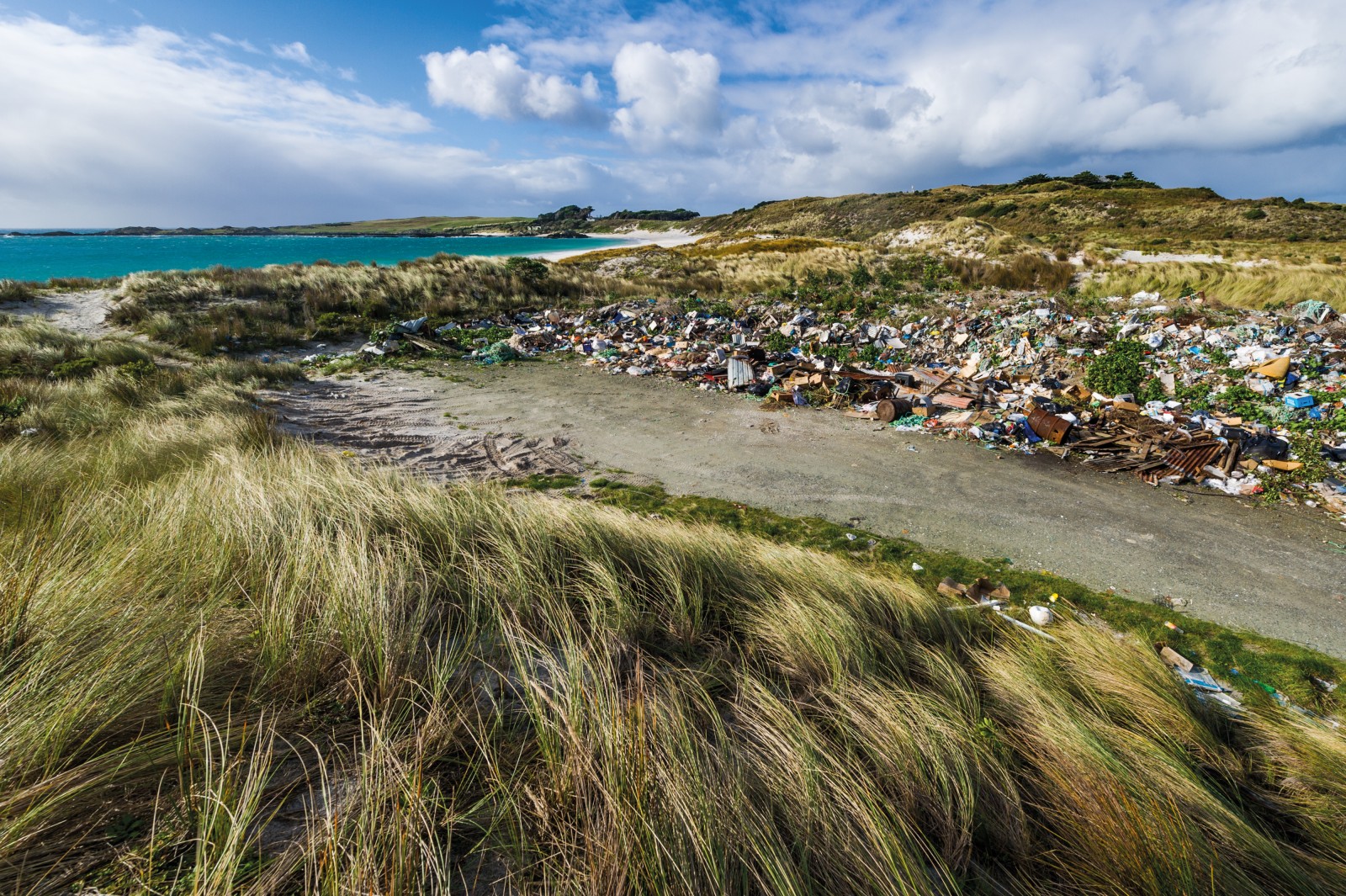
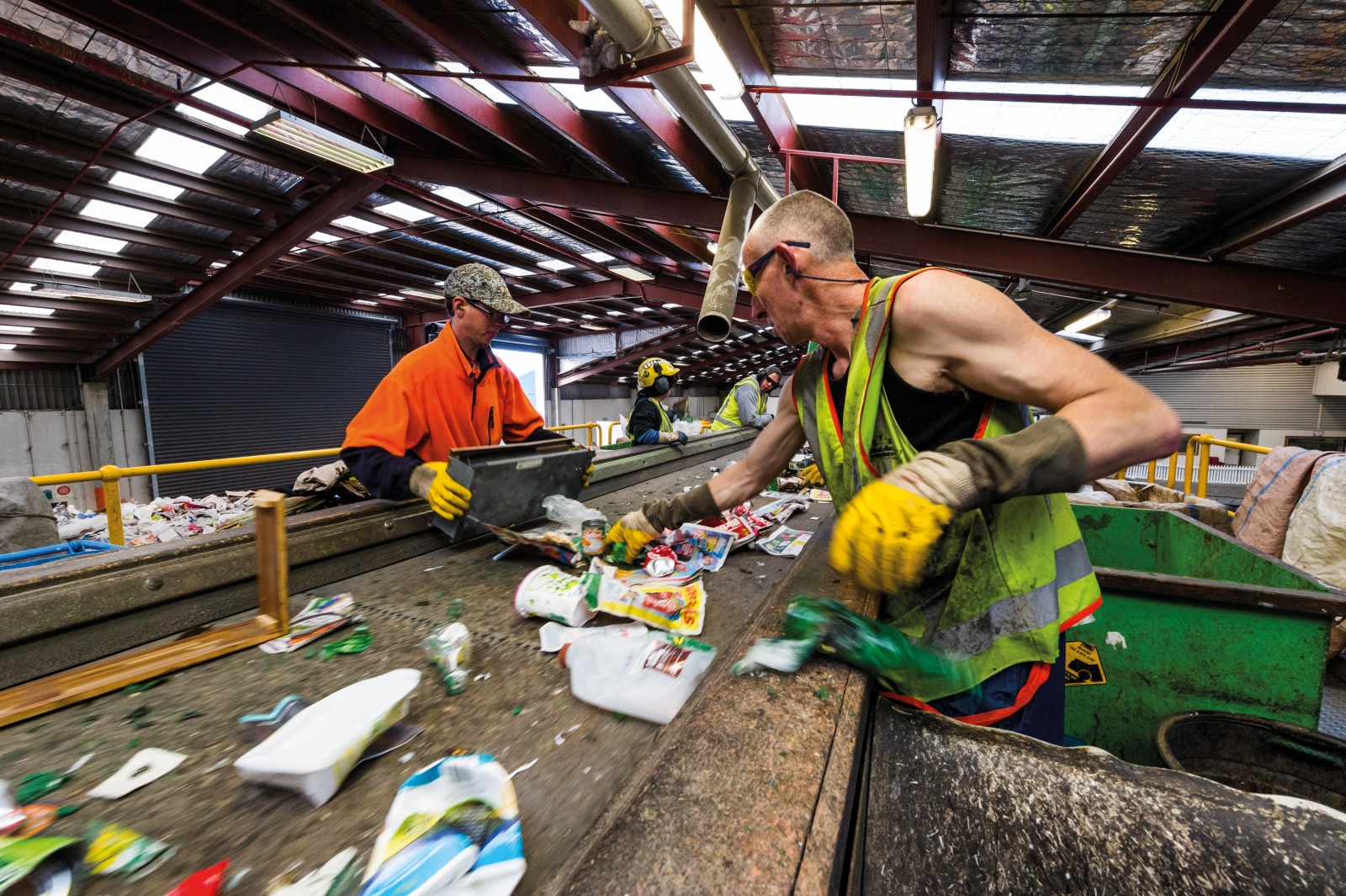
In Wellington, Kaibosh Food Rescue collects surplus food from around two dozen retailers and producers, one of several such volunteer programmes around the country. Mostly it’s food that’s good enough to eat but not to sell. Volunteers shift between 10 and 15 tonnes every month, mostly to other charities such as Zero Food Poverty; the equivalent of 28,500 meals that would otherwise have gone to the tip.
Kaibosh general manager Matt Dagger says people don’t understand how much food waste there is: “We come in at the retail end, but nearly 40 per cent of food waste happens before it even gets to markets. Carrots that are the wrong shape, or fruit the wrong colour…” Kaibosh, he says, has two missions. “Obviously we want to minimise food waste, but we also try to point out the extent of food insecurity—the numbers of New Zealanders who don’t have enough to eat. In fact, it’s relatively easy to bring those two issues together, to close that loop.”
Others simply cut out the middleman and go straight to the source—the nearest dumpster. Nobbs (anonymity respected) gets enough food for a week from just two Wellington bins, one night a week, with enough left over to feed a friend’s flat, plus provision the lunch he cooks for homeless people once a week. Such is the bounty that gets thrown away every day in New Zealand. Dumpster diving can be high-risk: most bins are filthy, and you may have to compete with vermin for your next meal. A little knowledge of food hygiene and microbiology goes a long way—the difference between expiry date and “best before”, for instance, becomes critical.
But Nobbs has never gotten sick from dumpster food, “and I’ve eaten green meat during the bad times”. You have to trust your instincts, he says, and cook things for a bit longer—some of this stuff is fresh, some of it is lethal. If a can is taut, bulging, it’s a grenade. Bread and cakes, though, stay surprisingly fresh, as do packaged goods, boxed juices, even fruit and vegetables if they haven’t spent too long in the dumpster. Dairy is a time bomb: if it’s warmed to ambient temperature, it’s already growing bacteria. The only thing Nobbs won’t take is fish, and that’s a political statement (“If I want fish, I can go and catch them myself”), not an act of self-preservation.
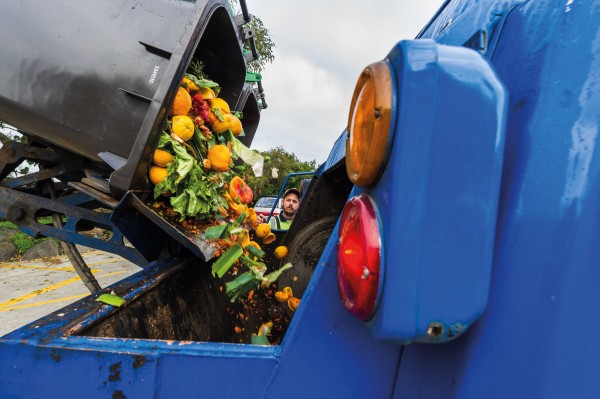
And there are ethics to abide by—the diver’s code: if it’s locked, leave it alone; never leave a mess; only take what you can use; finders keepers, but the homeless get priority. Bounty trading, though, is sanctioned—divers often share out or swap their prizes. “One night, I met a really nice guy at the bin. We’d already hit another bin, so we gave him some of the stuff we’d found…because this one didn’t have much in it. He’d just put his kids to bed, and he was out getting food for them for the next day. It’s a shame that people have to resort to something that’s technically illegal to put food on the table.”
Supermarkets, of course, have to condemn the practice as a matter of policy, and they sometimes assign staff to guard the bins, but Nobbs says smaller businesses—bakeries, cafes—are often careful to place their food waste a ‘safe’ distance from their inedibles, to make life easier for divers.
Diving abides by the first law of waste reduction: reuse. In New Zealand, rubbish and waste are still the disposer’s property until ‘legitimate’ collection.
Technically, dumpster diving is theft, a crime. But which is the more criminal? Reusing food that others have already discarded, or sending 250,000 tonnes of food to the tip every year?
There was a time in Nobbs’ life when he dived to survive, but these days he doesn’t need to scavenge: he does it out of pure political conviction. “I’m disgusted by the degree of waste in New Zealand, when there are so many people that need this food. We’re all culprits.”
[Chapter break]
Buried, not forgotten
In 1995, there were 327 tips around the country—some of them informal dumps among the mangroves, others municipal landfills. The Resource Management Act shut many of them down, leaving just 54 registered tip sites, which are obliged to abide by best practices. A landfill nowadays is a massive investment: contractors are obliged to manage leachate, place engineered liners beneath the landfill and recover methane.
But those old landfills live on beneath sports fields and subdivisions. Decomposing refuse literally seethes with biochemical alchemy: chemical, thermal and microbial reactions produce gases. Even non-toxic substances, mixed in the wrong combination, can assemble toxic compounds. As water seeps through the midden, it carries out lead, cadmium, chromium, mercury, toluene, dioxins, organophosphates and PCBs (polychlorinated biphenyls). Operators are required to maintain a landfill 30 years after closure, but leaching can go on for 50 or more. It’s generally accepted, says the Zero Waste Trust, that these tips will fail sooner or later. According to a 2002 Ministry for the Environment report, there are still 7200 potentially contaminated sites around New Zealand—716 are landfills.
[sidebar-3]
Around a quarter of all landfill waste is organic—food and green waste. As it decomposes, it gives off, among other things, methane and carbon dioxide. A number of municipal landfills nowadays either capture methane and neutralise it or use it to generate electricity. But capture can be haphazard—typically, more than half a site’s methane, sometimes more, still escapes. Critics point out, too, that methane emissions continue long after the site has been shut down. Residual methane can ‘migrate’ considerable distances: there are cases in the United States where it has found its way into neighbouring houses and ignited, blowing them up, and people playing on sports fields atop old landfills have been badly burned in spontaneous explosions of leaking gas.
Ideally, organic waste would never end up in a landfill at all. It’s still full of energy and nutrients, so why burn it when it can be diverted back into natural cycles? Since 2006, Wellington City Council has collected food waste from commercial subscribers such as supermarkets, restaurants and cafes. Some 21 tonnes of scraps go onto a conveyor belt every week at the Happy Valley landfill, to be checked for alien items such as stray cutlery. Then they’re mixed into a mountain of green waste from council vegetation maintenance. Three hundred days later, filled rolls, flans and French fries have deconstructed back to the elements and enzymes of which they were born. Gardeners close the loop, buying the compost for their veggie gardens. And so it begins again…
Since 2006, Kai to Compost has kept nearly 7200 tonnes of food out of the landfill.
[Chapter break]
The movement movement
Everyone agrees that composting the food we don’t eat is a good idea; composting what we’ve already eaten is another thing. In 1993, I went to Wellington City Council for the city’s first private resource consent for a composting toilet. It took more than six months and repeated site visits, consultations, submissions and reports before I finally succeeded, subject to further monitoring. Inspectors simply couldn’t understand why I’d want to put a longdrop inside a house.
After the first month, I could recite the environmental case by rote: no, it wasn’t a longdrop; no, it wouldn’t smell; no, it wouldn’t use any water; yes, I fully intended to put the proceeds round my veggies. Right across the road from my place was the Makara River, so badly polluted by leachate from septic tanks that the council had put a moratorium on any new ones. Here I was trying to adopt river-friendly technology and being stymied by the same people who were concerned about the river.
At that time, Wellington City was still pumping its sewage—solids and all—into Cook Strait. Hutt City was doing the same. In fact, they were the last major centres to stop doing it, in 1998 and 2001 respectively, compelled by the passage of the Resource Management Act.
Throughout the 90s, nearly a billion litres of sewage was being dumped into the seas around New Zealand every day.
Composting toilets keep all of that in-house, which is at once their greatest benefit and their biggest bugbear—they demand that we take responsibility for our own waste, and only some people are comfortable doing that. But the environmental and economic gains are huge. Consider this: every time you flush even a modern dual-flush cistern, you’re taking either three or six litres of fresh water harvested and treated to potable standard at vast cost, polluting it, then sending it off to be treated all over again, at more cost. If you still have an old single-flush toilet—and plenty of houses do—you’re polluting as much as 11 litres of water, meaning a family of four can get through more than 80,000 litres of clean water a year.
Sewage treatment is costly, energy-intensive, and nobody wants it anywhere near them. Installing and maintaining reticulation is a major headache for cash-strapped councils everywhere. (As a result, councils in sensitive riparian regions and lakelands of Scandinavia and Germany have made composting toilets a legal requirement—some new subdivisions have no sewers at all.) In New Zealand, however, councils will not give consent to a composting toilet where sewerage is already available, so for now, composting is only an alternative to a septic tank.
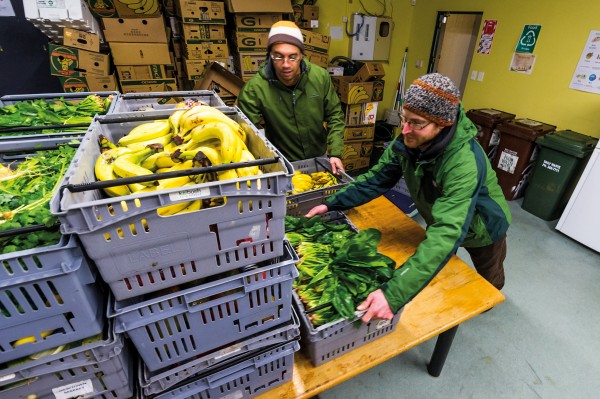
If you think composting toilets sound primitive, bear in mind that as late as the 1950s, nearly a third of the populace was still off the sewer grid. Around 40 per cent of the national movement was simply being dumped, untreated, into the sea or waterways, and much of the rest was merely ‘screened’—meaning the biggest lumps were filtered out and carted to landfills—before being piped into the ocean. The good people of Bluff were still putting their ‘night soil’ buckets out for collection until the mid-1960s. According to the Te Ara Encyclopedia, the residents of Kāinga in North Canterbury were the last in the country to enjoy the privilege of a cistern—they were still using buckets in 1986.
But the problem of human waste doesn’t end with the last generation; the next one has problems all its own. In the first two and a half years of its life, a baby will need around 6000 nappy changes. Wellington’s infants alone produce 6600 tonnes of excreta a year. Little wonder, then, that pressed parents often go for the convenience of disposable nappies, and send around a million of them to New Zealand landfills every day. Would it be better for the environment if they washed and reused cotton nappies?
[sidebar-4]
Historically, there has been no right answer: washing fabric nappies uses water and energy, and laundry powders release phosphates into wastewater. On the other hand, disposables have a more obvious footprint—the sheer volume of waste, the costs of manufacture and transport—and may represent up to three times the greenhouse gas emissions of reusable nappies.
In the real world, however, convenience often trumps good intentions, and disposable nappy use is on the rise. New Zealanders send nearly 96,000 tonnes of sanitary hygiene products to landfill each year. But that doesn’t all come from babies—the unspoken quotient is a staggering volume of adult incontinence and menstrual management products. An ageing population now generates more than 3100 tonnes of incontinence waste in Christchurch alone every year, or 42 per cent of all sanitary hygiene waste.
Karen and Karl Upston saw all that organic material going to landfill and figured there had to be a way to stop it. In 2009, they launched Envirocomp, a composting facility specialising in Christchurch’s sanitary waste. At first, they processed about 15,000 nappies a day. In 2012, they opened a second facility at Upper Hutt. Between the two sites, they can now compost around 120,000 nappies a month, diverting 2280 tonnes of organic waste. Sanitary products get shredded: the absorbent materials—wood pulp and other natural fibres—are subjected to high heat to kill off any pathogens. Eventually, the waste decomposes to produce compost (it’s not recommended for veggie gardens), but the remaining plastic still has to be recovered and disposed of.
[Chapter break]
Our shrinking material world
Organisations such as Zero Waste talk about a future without landfills, without rubbish bins. In a 2007 conference presentation, Zero Waste Trust director Jo Knight told delegates: “The future is an extension of today. Can we get to zero waste? Put the above policies in place, along with some social imperative, and we will be damn close.”
But if household consumption expenditure figures are any guide, the future will not be anything like today. David Stephenson scratches a crude graph on his jotter—three spidery lines in ballpoint that cut straight to the nub: “Here is your total product.” He scribes a baseline—waste to landfill, which has held more or less flat in Tasman. Then another, gently rising line. “Here’s your recycling rate.” On top, a steeper line, arcing towards the top corner of the page. “This is consumption. So while we’re recycling much more than we did, we’ve still got this much going to landfill.”
And that’s the elephant lurking behind every mountain of rubbish. Real household consumption expenditure—a measure of the goods and services we buy—jumped by nearly 57 per cent from 1992 to 2014 (in dollars, calculated in 2009 prices), and only a small part of that increase is down to population growth. In 2012, Kiwis’ consumption expenditure was the fourth highest in the OECD as a percentage of GDP growth, eclipsing even the acquisitive Americans. Mostly this is down to higher disposable incomes—the bulk of consumption growth came from spending on clothing, household goods, takeaways and restaurants.
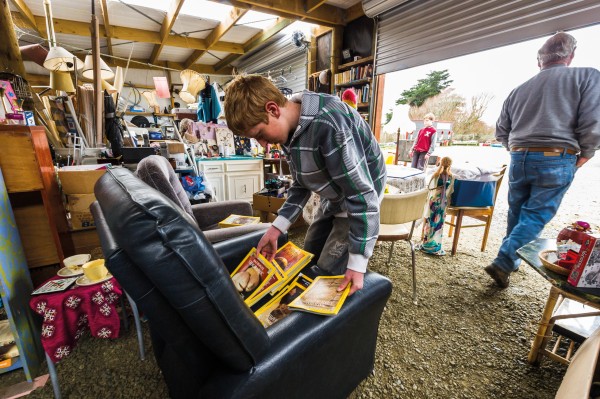
The more stuff we buy, the more trash it creates—rubbish in, rubbish out.
“There will always be residual waste,” says Stephenson. “It just comes down to the amount of it. We’ve made great strides in terms of recycling more, but we’re consuming so much more than we did 20 years ago. Back then, zero waste seemed like an achievable target, but if you look at the results around the country, it’s become an aspirational goal rather than a necessarily achievable one.”
Nobody knows that better than Matthew Luxon and Waveney Warth. A rubbish bin now sits in their garage: a potent metaphor for a losing battle. Even this frugal couple must nowadays put a rubbish bag at their gate. “That’s just a symptom of how hard it is to be rubbish-free,” says Luxon, “and it seems to be getting harder—everything seems to have so much more packaging around it.” He still believes the power lies with the consumer, but multi-million-dollar marketing campaigns are hard to fight.
So, sometime this year, Warth will again take out the rubbish. The couple, somehow, still keep their waste to just the one bag each year. It’s just gotten heavier.






